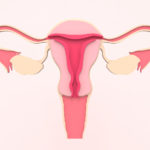About Fertility
Can Uterine Polyps Cause Infertility?

Uterine polyps are growths attached to the inner wall of the uterus and protrude into the uterine cavity. Can uterine polyps cause infertility? Polyps more commonly occur in older women; however, young women of reproductive age may also have them.
What Causes Uterine Polyps?
They grow in response to estrogen and vary in size from just a few millimeters (grain of rice) to golf ball size or even larger. Women with irregular menstrual cycles appear more prone to get them, especially those with polycystic ovarian syndrome (PCOS) and obesity, due to the elevated estrogen associated with these conditions. Sometimes, in susceptible women having ovulation induction for infertility, polyps may appear, again most likely due to higher levels of circulating estrogen brought about by ovulation induction.
Uterine polyps are associated with infertility and may also increase the chance of miscarriage. Uterine polyps, especially in young women, are commonly benign (noncancerous). Precancerous changes called endometrial hyperplasia or uterine cancers may appear as uterine polyps in 5% of postmenopausal women but occur in only 1% of young women with polyps.
Signs And Symptoms of Uterine Polyps
Often women with uterine polyps have no signs or symptoms of having them. Signs and symptoms associated with polyps in young women include irregular menstrual bleeding. Menstrual periods may be frequent, unpredictable, and of variable length and heaviness. Bleeding or spotting between periods is another sign of polyps. Uterine cramping occasionally occurs and is the most common symptom of a uterine polyp.
Diagnosis of Uterine Polyps
The diagnosis of uterine polyps is made either with transvaginal ultrasound, hysterosalpingogram, or hysteroscopy. Transvaginal ultrasound requires a slender wand-like device inserted into the vagina. This device sends out sound waves, which creates an image of the uterus and what is inside. A related procedure called sonohysterography (SonoHSG) involves having saline instilled into the uterus through a small rubber catheter so that the intrauterine cavity can be more effectively identified using transvaginal ultrasound. A hysterosalpingogram or HSG is an X-ray of the uterus and fallopian tubes. A small catheter is inserted into the cervical canal so that radio-contrast dye can be injected. An X-ray is then obtained to determine if the intrauterine cavity is normal and if both fallopian tubes are open. Hysteroscopy involves the insertion of a thin telescope (hysteroscope) through the cervix so that the intrauterine cavity can be visualized. Uterine polyps can also be removed by operative hysteroscopy.
Uterine polyps, especially in young women, are most often benign (noncancerous). Some precancerous changes called endometrial hyperplasia or uterine cancers can appear as uterine polyps in 5% of postmenopausal women but are uncommon, only 1% in younger women.
Contact Us
At Fertility Centers of New England, our goal is to optimize all aspects of a patient’s overall health in order to have the best possible chance of conceiving. If you have more questions like “can uterine polyps cause infertility” or are having difficulty conceiving, please contact us today!



